How Thermal Mass Keeps You Warm and Cool
http://decor-ideas.org 01/26/2015 02:13 Decor Ideas
It’s been around since Roman times, so it’s not exactly new, but we hear the term “thermal mass” bandied around these days when we talk about passive solar design and sustainable homes. So what exactly does it mean? If you want to maintain a comfortable temperature all year round in your home with minimal use of heating or air conditioning, read on for a clear breakdown.
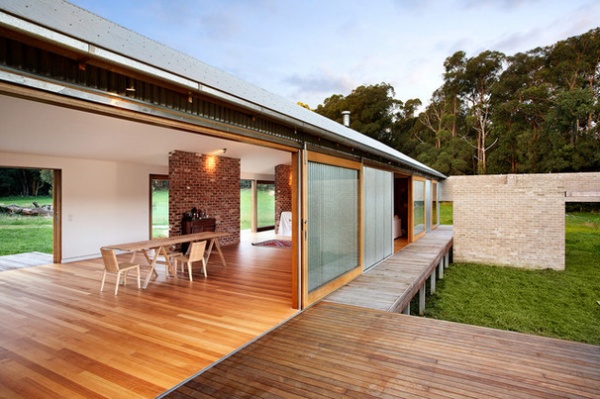
Materials Matter
“Thermal mass” describes a material that has the ability to absorb and store heat. Materials with a high thermal mass take a long time to heat up and cool down. So in cool weather, a material with thermal mass can absorb heat, store it and slowly emit it at night, while in warm weather, it can help to maintain a building’s coolness when used correctly. Brick, for example, has thermal mass, but wood floors and brick veneer do not.
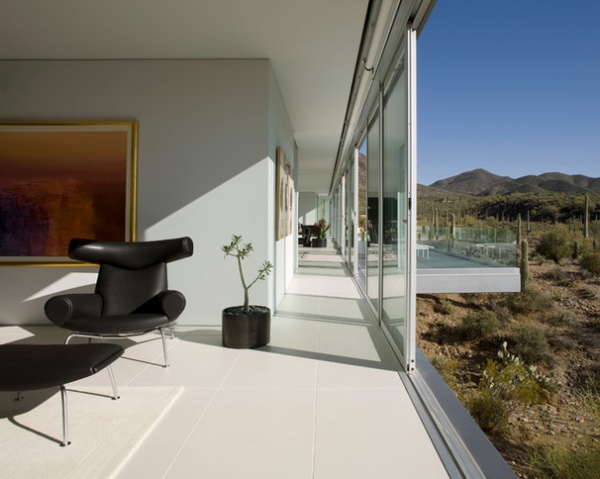
Other examples of thermal-mass materials are concrete, rammed earth, stone and ceramic tiles.
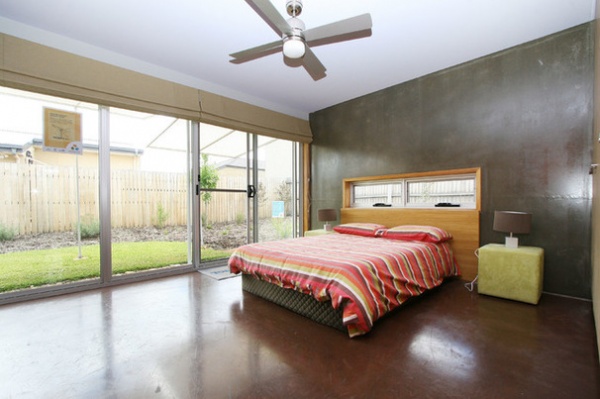
According to Ngaio Fitzpatrick of building design company Strine Environments in Canberra, Australia, designing with thermal mass can help to maintain a comfortable temperature of about 68 to 77 degrees Fahrenheit (20 to 25 Celsius) all year round, even in climates with such extremes as Canberra, where it can be over 100 degrees Fahrenheit (40 Celsius) in summer and about 20 degrees Fahrenheit (minus six Celsius) in winter.
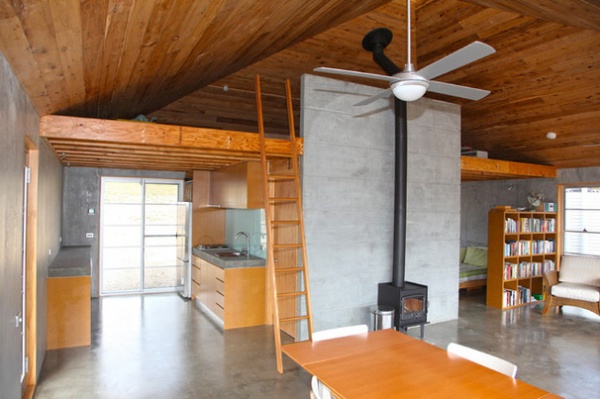
Strine Environments likes to use concrete slabs and precast concrete walls to bring thermal mass to the homes it designs and builds. For those who don’t like the look of lots of concrete, here it is balanced by the use of wood — a material that many people find visually warmer than concrete.
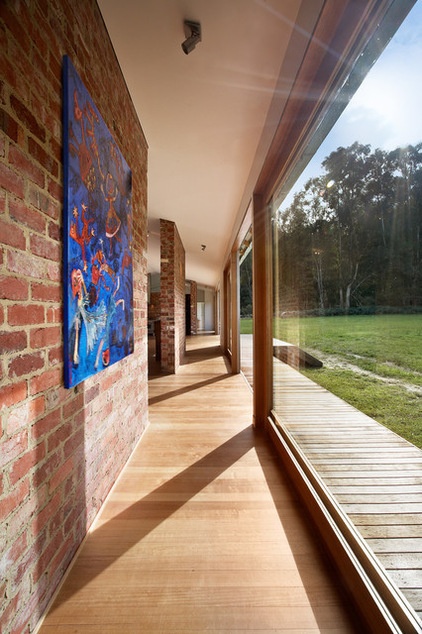
Horizontal and Vertical
While we often think of floors such as concrete when we think of thermal mass, it can also be used vertically, such as in internal walls made of brickwork.
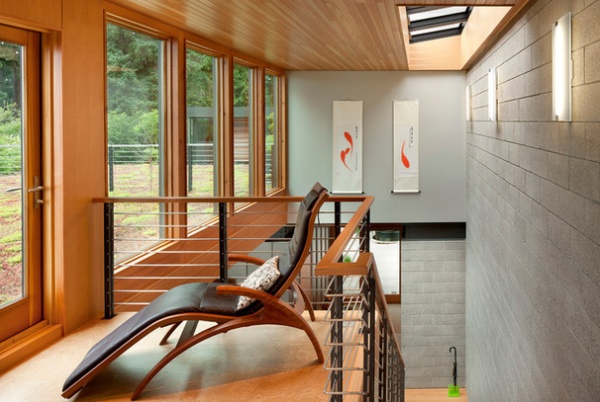
Here a CMU (concrete masonry unit) wall provides thermal mass to the home. The extensive glazing and skylight allow sunlight onto the wall to warm up the thermal mass.
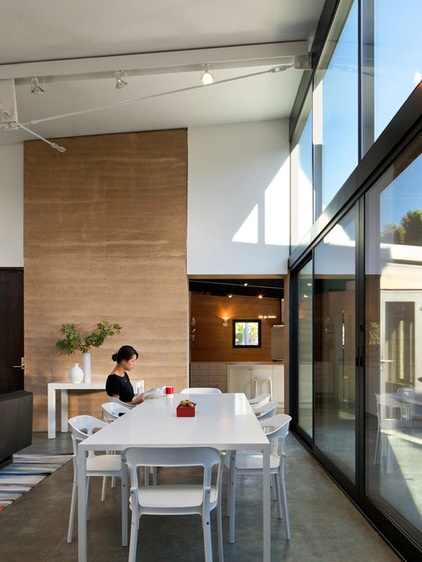
In this home a rammed-earth wall acts as both a screen and a source of thermal mass.
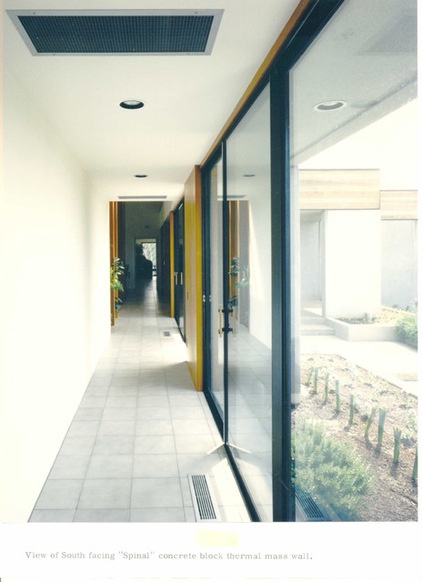
In this home the wall on the left was formed from a concrete block but has been plastered. The wall of glass on the right is shaded in summer but in winter allows the warmth of the sun to hit the concrete wall and tiled floor.

Liquid Mass
Water can even be used as thermal mass. In this home fiberglass water tubes have been filled with water and clad with copper at the top to allow for maintenance. At night LED lighting illuminates the tubes for a special effect.
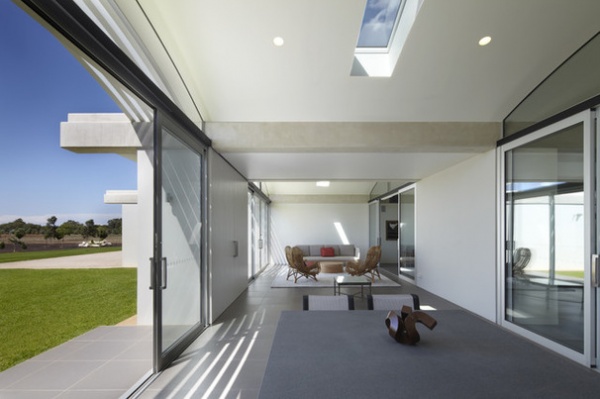
Day and Night
Thermal mass is particularly good for climates with a high diurnal difference, which simply means a big difference between day and night temperatures. This is the case for many dry desert climates, but less so for tropical climates (though designed effectively, thermal mass can still be used for tropical climates). Use of thermal mass will help to regulate these environments and keep the temperatures constant.
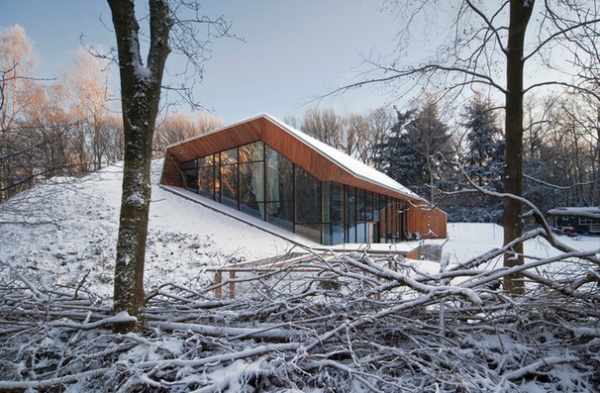
Good Glazing
Thermal mass needs to be used in conjunction with other passive solar design techniques, such as orientation, glazing and insulation. Large areas of glass allow the sun to hit the thermal mass so that it can absorb heat. The amount of glazing and where it’s located depends on the climate.
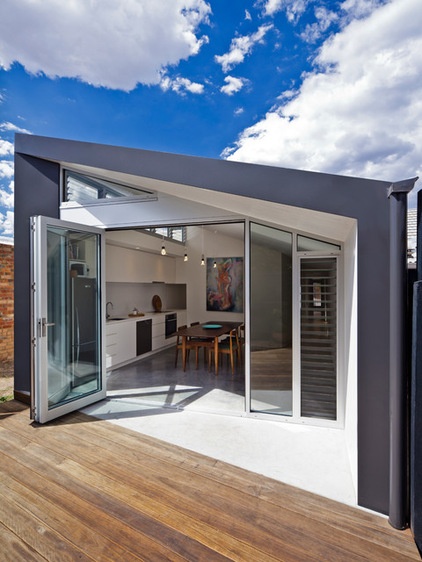
In summer the thermal mass should be protected from the sun by the angle of the eaves or by shading. This allows the slab to draw coolness from the earth and help to maintain lower temperatures even on hot days.
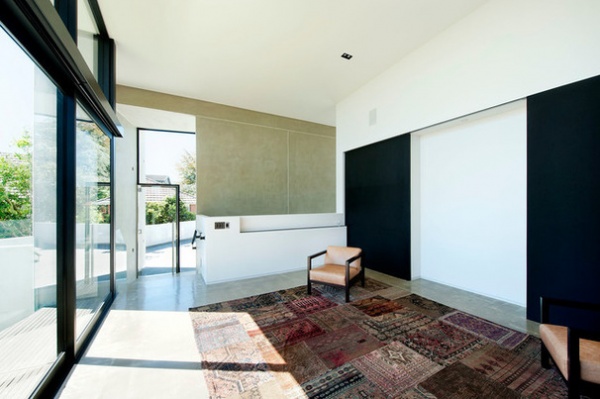
Let the Sun Shine In
Materials such as wool rugs and carpet, though we like them for their warmth underfoot, do not have thermal mass, so use them strategically and ensure that some sun hits a slab floor directly in winter for it to be effective.
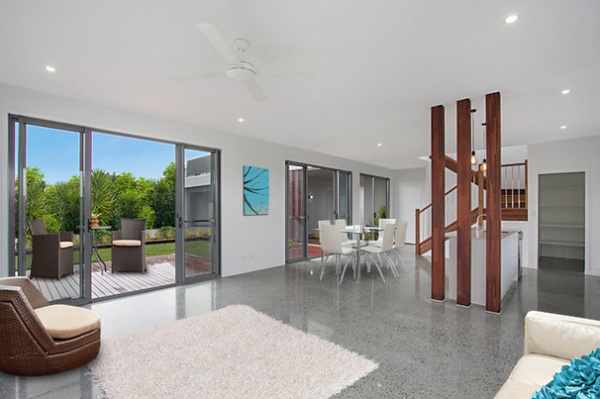
Up-front Investment
Given the ability of thermal mass to control temperature, you would think we would all be using it. But, as with many investments, the initial outlay can be expensive. As Fitzpatrick says, precast concrete walls are more expensive than Gyprock. Weigh the long-term benefits, though, because future savings are likely to outweigh the up-front investment.
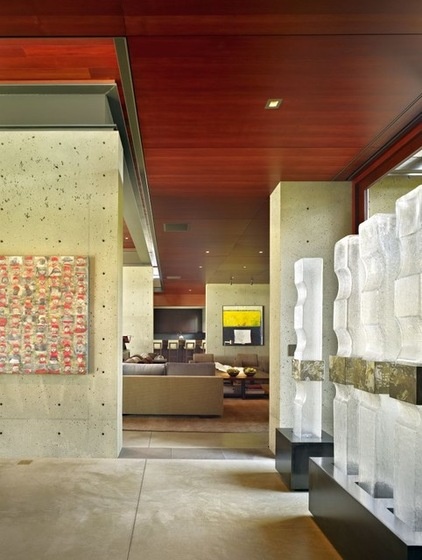
Sustainability
The same goes for the sustainability principle of thermal mass — there can be a high embodied energy in building with thermal-mass materials, such as concrete, in that a great deal of energy goes into its manufacture. But this can often be balanced against the potential future energy savings.
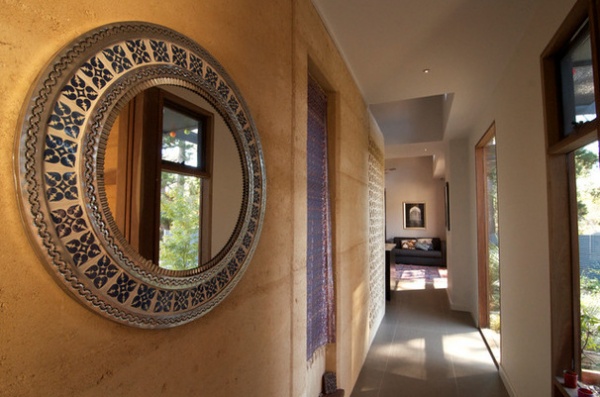
Existing Homes
Though we don’t all have the luxury of building from scratch and adding thermal mass to our homes at the start, there are ways to bring thermal mass into existing homes or renovations. Uncover an existing concrete slab, for example. Old carpeting could be removed and the slab polished or tiled with the appropriate ceramic tiles. Brick walls could be added for vertical thermal mass. Consult an architect or a building designer who specializes in sustainable design for the best ways to add effective thermal mass to your home.
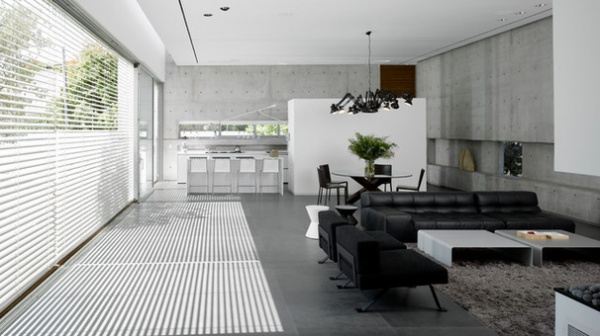
Ancient Ideas
Even though it may sound technical, using thermal mass is not a new idea. “It sounds complex, but it’s actually simple and is using principles from Roman times,” says Fitzpatrick. “They used thermal mass to keep their buildings cool; they didn’t have air conditioning.”
Browse more stories about green building
Related Articles Recommended












